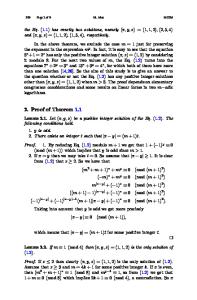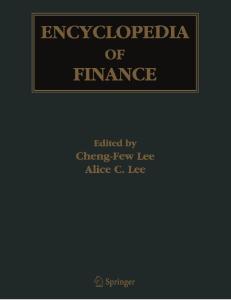Asymptotic Behavior of Extreme Values of Queue Length in M / M / m Systems
- PDF / 124,343 Bytes
- 8 Pages / 594 x 792 pts Page_size
- 27 Downloads / 284 Views
ASYMPTOTIC BEHAVIOR OF EXTREME VALUES OF QUEUE LENGTH IN M / M / m SYSTEMS B. V. Dovhai1† and I. K. Matsak1‡
UDC 519.21
Abstract. The paper investigates the asymptotic behavior of almost surely maximum length in queueing systems. For a system M / M / m , 1 £ m < ¥ , a statement of the type of the law of iterated logarithm is established. We also consider the case m = ¥ for which the asymptotic behavior is much different. Keywords: queuing system M / M / m, extreme values of queue length, asymptotic behavior almost surely. THE MAIN STATEMENTS Let us consider an m-channel queuing system (QS) with Poisson flow of requests arriving with intensity l , and with exponentially distributed service time x
P( x < x ) = 1 - exp ( - mx ), x ³ 0 , i.e., it is an M / M / m QS (see [1–3]). Parameters l and m are subject to the condition
r=
l < 1. mm
(1)
Let the system be empty at the instant of time S 0 = 0, and S 1 , S 2 , K , S k , K be sequential instants of time when the system is idle after respective busy phase (by condition (1), such infinite sequence S k always exists [2, p. 468]). By queue length we understand total number of requests that are in service or wait for it. Denote by Q ( t ) the queue length at time t : Q ( t ) = sup Q ( s), Q n = Q ( S n ) . 0 £ s< t
The studies [4–9] consider the problem of finding the asymptotics of the values of Q n and Q ( t ) even in a more general statement. However, noteworthy is that the case of weak convergence was considered in all the above-mentioned studies. In the present paper, we will analyze the asymptotic behavior of extreme values of Q n and Q ( t ) almost surely (a.s.). Moreover, we will consider the case m = ¥ (unlimited number of service channels). It appears that the asymptotics of Q n and Q ( t ) substantially differs for it from the case 1 £ m < ¥ . Let us formulate the main results of the study. 1
Taras Shevchenko National University of Kyiv, Kyiv, Ukraine, †[email protected]; ‡[email protected]. Translated from Kibernetika i Sistemnyi Analiz, No. 2, March–April, 2019, pp. 171–179. Original article submitted March 12, 2018. 1060-0396/19/5502-0321 ©2019 Springer Science+Business Media, LLC
321
THEOREM 1. Let condition (1) be satisfied for the QS M / M / m, 1 £ m < ¥. Then a.s. 1 Q ( t ) ln - ln t r lim sup = 1, L2 ( t ) t ®¥
1 - ln t r = -1 , L3 ( t )
(2)
Q ( t ) ln lim inf t ®¥
(3)
hereinafter, L2 ( t ) = ln ln t and L3 ( t ) = ln ln ln t . Remark 1. If conditions of Theorem 1 are satisfied, then equalities (2) and (3) hold in case of replacement of Q ( t ) with Q n and t with n . Let us consider the case m = ¥ with the following notation:
~r = l , a = l-1 exp ( ~r ) , m an =
a (t ) =
ln n æ L3 ( n) + ln ~r + 1 ö ç1 + ÷÷ , L2 ( n) çè L2 ( n) ø ln t - ln a æ L3 ( t ) + ln ~r + 1 ö ç1 + ÷÷ . L2 ( t ) çè L2 ( t ) ø
THEOREM 2. For QS M / M / ¥ the following equalities hold for arbitrary l > 0 and m > 0 :
P ($n0 "n > n0 Q n Î An = {[ a n ] + k , k = 0, 1, 2, 3}) = 1,
(4)
P ($t 0 "t > t 0 Q ( t ) Î A ( t ) = {[ a ( t )] + k , k = -1, 0, 1, 2, 3
Data Loading...











